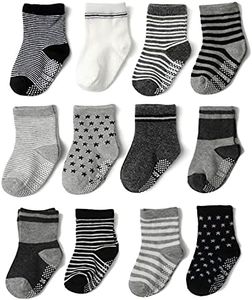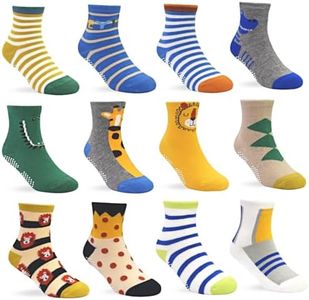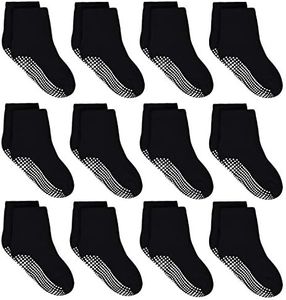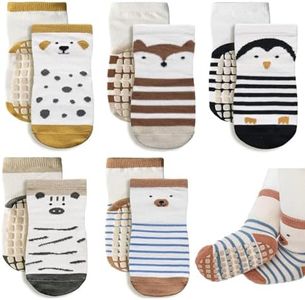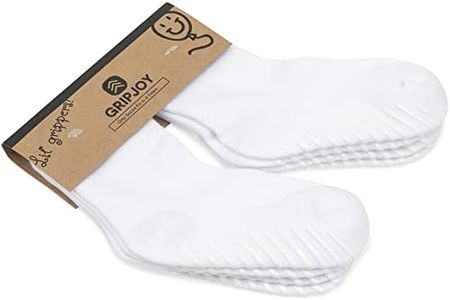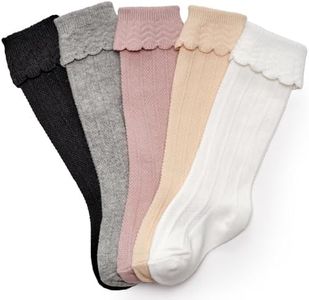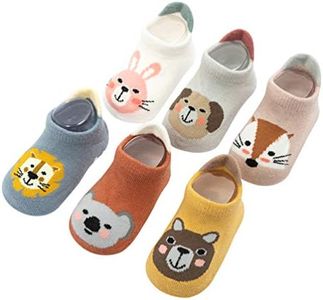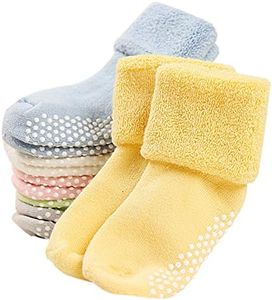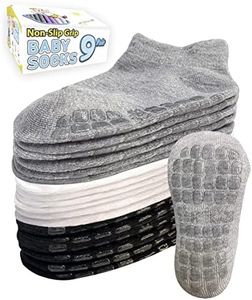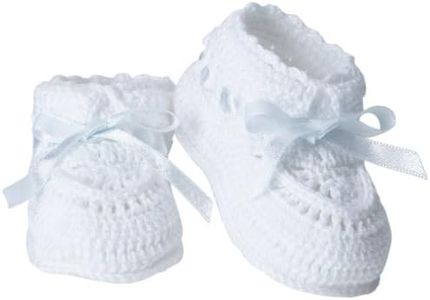We Use CookiesWe use cookies to enhance the security, performance,
functionality and for analytical and promotional activities. By continuing to browse this site you
are agreeing to our privacy policy
10 Best Baby Socks That Stay On
From leading brands and best sellers available on the web.Buying Guide for the Best Baby Socks That Stay On
Choosing baby socks that truly stay on can be surprisingly tricky. Babies are constantly wiggling, crawling, and exploring, so regular socks may slip off or bunch up, leaving little feet cold and unprotected. The best approach is to focus on specific features that affect both comfort and grip, so you can keep your baby cozy and happy. Understanding these key details can help you find socks that are practical for everyday use and suitable for your baby's unique needs.Elasticity and Cuff DesignThe cuff is the band at the top of the sock that holds it in place. A snug, stretchy cuff can prevent socks from slipping off, but it's important that it isn't too tight, as that can leave marks or restrict circulation. Socks typically come with different cuff styles like folded, ribbed, or double-layered. For newborns or babies with chubby legs, look for cuffs that have gentle elasticity and don't dig into the skin. A good test is to stretch the cuff lightly and see if it returns to shape without feeling stiff. If your baby tends to kick socks off, opt for double cuffs or ribbed styles designed to offer extra grip.
MaterialThe material is what the sock is made from, and it plays a big role in comfort, breathability, and grip. Cotton is soft and breathable, perfect for daily wear, while blends with spandex or elastane add stretch so socks stay on better. Wool or bamboo options offer warmth and moisture-wicking, which is useful in cooler climates. Babies with sensitive skin may do best with organic or hypoallergenic materials. Consider your baby's skin type and the climate—choose softer, lighter fabrics for warm environments and thicker blends in colder months. Look for stretch components in the fabric blend for a secure fit that won’t irritate tiny feet.
Size and FitBaby socks are sized by age range or foot length, which can vary between brands. Socks that are too big will slip off easily, while ones that are too small may restrict movement and cause discomfort. Always check the sizing chart and, if possible, measure your baby's foot from heel to toe. For rapidly growing babies, choose socks that offer a bit of stretch so they fit longer, but make sure they're not loose. If your baby is active or already walking, a more tailored fit can help with staying power.
Anti-Slip FeaturesSome baby socks have rubber or silicone grips on the soles, which help prevent slips when babies start crawling or walking. These grips can also provide a bit of weight to the sock, helping it stay in place. For non-walking infants, anti-slip features are less critical, but they become more important once your baby becomes mobile. Decide if your baby is at a stage where grip is needed or if comfort is your main focus.
Seam Placement and SoftnessThe seams in socks—particularly at the toes—can cause irritation or make it easier for socks to twist and slip off. Some baby socks offer seamless or flat-seamed designs, which enhance comfort and stay-on performance. If your baby has sensitive skin or often takes off socks, look for seamless styles or those with extra-soft stitching in the toe area. Comfort and lack of irritation will often make a baby less likely to pull the socks off.
